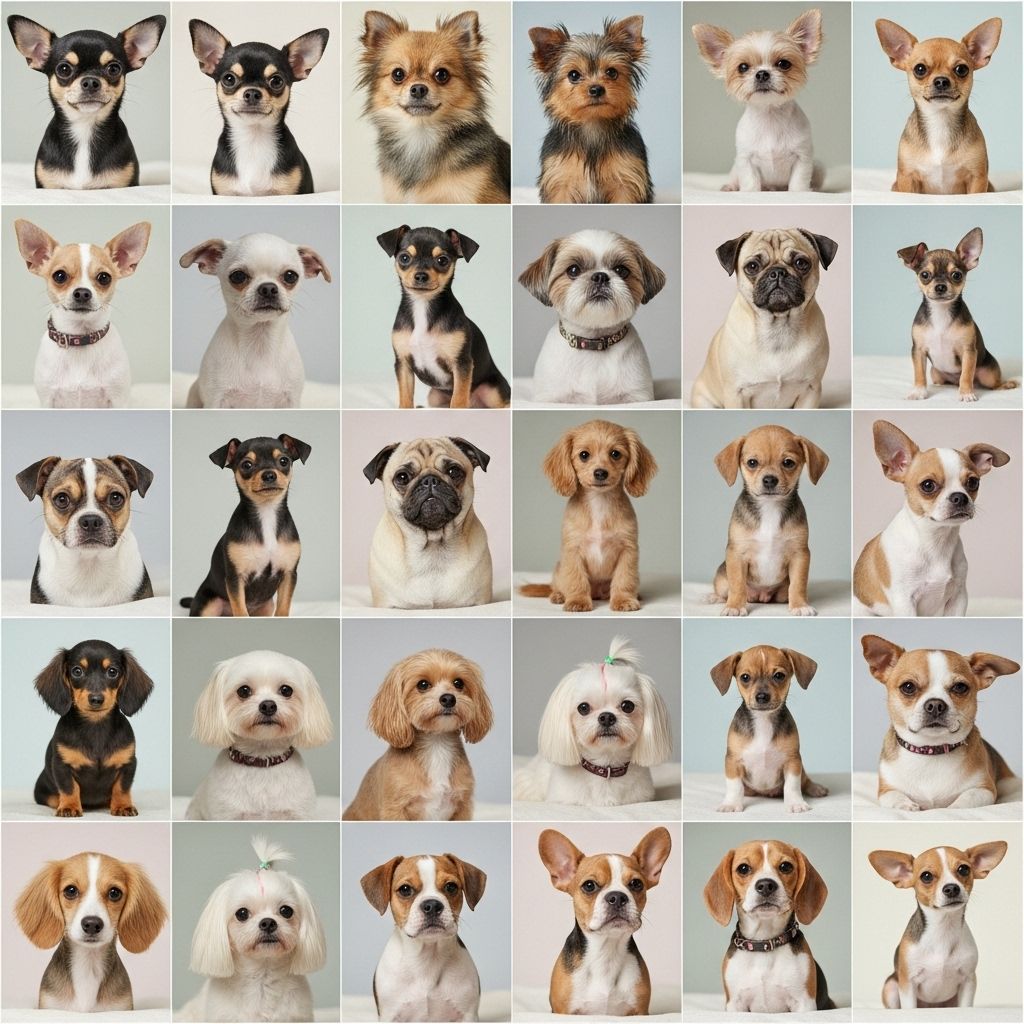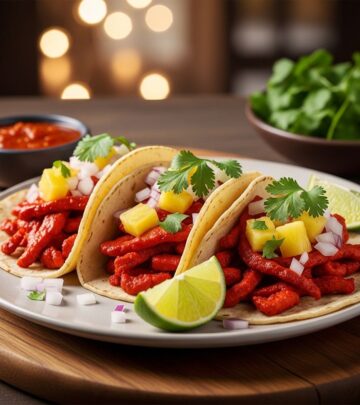Small Dog Breeds: 45 Tiny Companions That Stay Petite Forever
Discover the most adorable small dog breeds that stay compact throughout their lives

Image: HearthJunction Design Team
45 Small Dog Breeds That Stay Tiny Forever
When it comes to selecting a canine companion, size matters—especially if you live in an apartment, have limited space, or simply prefer a lap-sized friend. Small dog breeds offer numerous advantages: they generally require less food, take up less space, and are often easier to travel with than their larger counterparts. What’s more, research shows that smaller dogs typically enjoy longer lifespans than larger breeds, giving you more years with your beloved pet.
Whether you’re searching for a tiny companion that fits perfectly in your purse or a small but sturdy pet that can keep up on adventures, there’s a small dog breed that’s perfect for your lifestyle. We’ve compiled a comprehensive guide to 45 small dog breeds that remain petite throughout their lives, detailing their physical characteristics, personality traits, exercise needs, and more to help you find your ideal match.
Popular Small Dog Breeds
These beloved small breeds have captured hearts worldwide with their charming personalities and adorable appearances.
Chihuahua
As one of the world’s smallest dog breeds, the Chihuahua packs an enormous personality into a tiny frame. Typically weighing between 2-6 pounds and standing only 5-8 inches tall, these pint-sized pups are known for their sassy attitudes and unwavering loyalty. Chihuahuas often form strong bonds with a single person and can be wary of strangers, making them excellent watchdogs despite their diminutive size. Their short coats require minimal grooming, though long-haired varieties need regular brushing. With a lifespan of 14-16 years, Chihuahuas make long-term companions for those who appreciate their spirited nature.
Yorkshire Terrier
The Yorkshire Terrier, or Yorkie, combines glamorous looks with a feisty terrier temperament. Weighing just 4-7 pounds with a height of 7-8 inches, Yorkies sport silky, hypoallergenic coats that require regular grooming to maintain their signature look. Despite their small size and elegant appearance, these dogs retain the bold personality of their terrier ancestors. Intelligent and energetic, Yorkies make excellent apartment dogs but need mental stimulation and moderate exercise to prevent boredom. Their portable size and adaptable nature make them perfect companions for various lifestyles.
Pomeranian
With their fox-like faces and fluffy double coats, Pomeranians are instantly recognizable small dogs. These lively companions weigh between 3-7 pounds and stand about 6-7 inches tall. Despite their small stature, Pomeranians possess confident, extroverted personalities and surprising intelligence. Their thick coats require regular grooming to prevent matting and control shedding. Pomeranians are alert and make excellent watchdogs, though their tendency to bark means early training is essential. These vivacious little dogs generally live 12-16 years and maintain their playful spirit throughout their lives.
Shih Tzu
Originally bred as companions for Chinese royalty, Shih Tzus continue their legacy as affectionate lapdogs today. Weighing 9-16 pounds and standing about 9-10 inches tall, these small dogs are recognizable by their flowing coats and sweet expressions. Shih Tzus are known for their friendly, outgoing personalities and get along well with children and other pets. Their luxurious coats require daily brushing and regular grooming appointments. With moderate exercise needs and a gentle temperament, Shih Tzus adapt well to apartment living and make excellent companions for seniors or first-time dog owners.
Rare and Unique Small Dog Breeds
For those seeking something different, these lesser-known small breeds offer unique characteristics and appearances.
Alaskan Klee Kai
Looking like a miniature Husky, the Alaskan Klee Kai is a relatively rare breed that captures attention wherever it goes. Weighing between 10-15 pounds and standing 13-17 inches tall, these dogs were developed in the 1970s as companion-sized versions of working Nordic dogs. Klee Kais inherit many traits from their larger cousins, including intelligence, energy, and a strong prey drive. They form close bonds with their families but can be reserved around strangers. Their double coats shed seasonally and require regular brushing. These active dogs need substantial exercise and mental stimulation to thrive.
Biewer Terrier
A relatively new breed officially recognized by the AKC in 2021, the Biewer (pronounced “beaver”) Terrier evolved from Yorkshire Terriers with a rare piebald gene. These elegant little dogs weigh 4-8 pounds and stand 7-11 inches tall. Their tricolored silky coats (white, black, and gold) require regular grooming to maintain. Biewer Terriers combine the spirited personality of terriers with an especially affectionate and playful disposition. They adapt well to various living situations, though their delicate size means supervision around small children is essential. With their charming personality and distinctive appearance, these rare dogs are growing in popularity.
Norwegian Lundehund
One of the world’s most unique dog breeds, the Norwegian Lundehund possesses several anatomical features found in no other breed. Originally developed to hunt puffins along Norway’s rugged coastline, these small dogs have six toes on each foot, extraordinary joint flexibility, and ears that can close completely. Weighing 13-16 pounds and standing 12-15 inches tall, Lundehunds have fox-like appearances and alert expressions. Their personality tends to be loyal but independent, with strong hunting instincts. Due to their rarity and specialized history, potential owners should research carefully and connect with breed-specific rescue organizations or responsible breeders.
Terrier Small Dog Breeds
Terriers combine small size with big personalities, making them popular choices for active families.
Cesky Terrier
Developed in Czechoslovakia, the Cesky Terrier is a calm, well-mannered member of the terrier family. Weighing 14-24 pounds and standing 10-13 inches tall, these dogs have a distinctive silky, wavy coat that requires professional grooming. Unlike many terriers, Ceskys tend to be less excitable and more deliberate, making them suitable for quieter households. They maintain the terrier intelligence and hunting ability but package it in a more relaxed personality. Ceskys form strong bonds with their families and do well with children when properly socialized.
Dandie Dinmont Terrier
With their distinctive “topknot” of hair and long, low bodies, Dandie Dinmont Terriers stand out in the terrier group. These uncommon dogs weigh 18-24 pounds and stand only 8-11 inches tall, with bodies twice as long as they are tall. Their unique pepper (bluish-gray) or mustard (yellowish-brown) coats require regular grooming to maintain. Dandies are known for being less reactive than many terriers, with a dignified, independent streak balanced by deep loyalty to their families. Despite their small size, they’re sturdy dogs originally bred for hunting badgers and otters, so they appreciate moderate exercise and mental challenges.
West Highland White Terrier
Instantly recognizable with their bright white coats and perky expressions, “Westies” embody classic terrier traits in a compact package. Weighing 15-20 pounds and standing 10-11 inches tall, West Highland White Terriers combine sturdy bodies with the confidence and determination characteristic of the terrier group. Their white double coats require regular brushing and occasional professional grooming to maintain their distinctive appearance. Westies are intelligent, independent thinkers with strong personalities who benefit from consistent, positive training methods. These energetic dogs need regular exercise but adapt well to apartment living provided they receive sufficient mental and physical stimulation.
Companion Small Dog Breeds
These breeds were specifically developed for their companionship qualities and excel as devoted pets.
Maltese
With their flowing white coats and gentle temperaments, Maltese have been cherished companion dogs for thousands of years. Weighing just 4-7 pounds and standing 7-9 inches tall, these tiny dogs have glamorous appearances that belie their playful, affectionate natures. Their silky, hypoallergenic coats require daily brushing and regular grooming to prevent matting. Despite their delicate appearance, Maltese are generally confident and adaptable, though their small size means they should be supervised around young children. These devoted companions bond closely with their families and thrive on attention and affection.
Cavalier King Charles Spaniel
Combining the athleticism of sporting spaniels with the temperament of a lap dog, Cavalier King Charles Spaniels embody gentle companionship. Weighing 13-18 pounds and standing 12-13 inches tall, Cavaliers have expressive eyes and silky, medium-length coats that require regular brushing. These dogs are known for their sweet, patient temperaments and adaptability—they’re equally happy curling up on the couch or joining for a moderate walk. Cavaliers generally get along well with children, other pets, and strangers, making them excellent family dogs. Their affectionate nature means they don’t do well with long periods alone.
Factors to Consider When Choosing a Small Dog Breed
Before bringing home a small dog, consider these important factors to ensure a good match for your lifestyle:
Exercise Needs
Don’t assume that small size equals low energy. Many small breeds, particularly terriers and some toy breeds, have considerable exercise requirements. Consider whether you can provide daily walks, play sessions, and mental stimulation appropriate for the breed’s activity level. Some breeds, like Jack Russell Terriers, need significant daily exercise, while others, like Pekingese, are content with short walks and indoor play.
Grooming Requirements
Small dogs come with various coat types requiring different levels of maintenance. Long-haired breeds like the Shih Tzu need daily brushing and regular professional grooming, while smooth-coated breeds like the Boston Terrier require minimal grooming. Consider whether you have the time and budget for a dog with high grooming needs or would prefer a more wash-and-wear companion.
Temperament and Training
Small dogs have diverse personalities ranging from bold and independent to gentle and eager-to-please. Research breed temperaments carefully to find one that matches your household. Some small breeds can be more challenging to housetrain than larger dogs, while others may be prone to excessive barking without proper training. Consider whether you have the patience and consistency for a more independent-minded breed or would prefer a naturally compliant companion.
Health Considerations for Small Dog Breeds
While small dogs generally live longer than larger breeds, they can be prone to certain health issues:
Dental Problems
Many small breeds are predisposed to dental issues due to their small mouths often crowding teeth. Regular dental care, including brushing and professional cleanings, is essential to prevent periodontal disease. Some breeds, like Yorkshire Terriers and Chihuahuas, are particularly prone to tooth loss and gum disease without proper care.
Patellar Luxation
This condition, where the kneecap slips out of place, is common in many small breeds. Symptoms include occasional skipping or an abnormal gait. Severe cases may require surgical correction. Maintaining appropriate weight and avoiding excessive jumping from furniture can help reduce strain on small dogs’ joints.
Tracheal Collapse
Some small breeds, particularly Pomeranians, Yorkshire Terriers, and other toy breeds, are prone to weakened tracheal rings that can collapse and cause breathing difficulties. Using harnesses instead of collars and maintaining healthy weight can help manage this condition. Recognizing symptoms early and seeking veterinary care is important for affected dogs.
Finding Your Small Dog
Ready to welcome a small dog into your home? Consider these options:
Adoption
Many small dogs end up in shelters and rescue organizations. Consider giving a home to a dog in need before purchasing from a breeder. Breed-specific rescues specialize in particular small breeds and often have puppies and adults available. Adoption fees generally include initial veterinary care and sometimes training support.
Responsible Breeders
If seeking a puppy from a breeder, research to find one who prioritizes health and temperament over appearance. Responsible breeders perform health testing on breeding stock, provide appropriate socialization for puppies, and offer ongoing support to puppy buyers. Be prepared to be interviewed by good breeders who care where their puppies go.
Frequently Asked Questions
Q: Do small dogs require less exercise than larger breeds?
A: Not necessarily. Many small breeds were developed as working dogs and require substantial exercise despite their size. While small dogs may need shorter walks due to their shorter legs, they often need just as much daily activity as larger breeds. Some small terriers and hunting breeds have particularly high exercise requirements.
Q: Are small dogs harder to housetrain?
A: Small dogs can sometimes be more challenging to housetrain, partly because their small bladders need more frequent opportunities to eliminate and partly because their accidents are smaller and might be overlooked, leading to inconsistent training. Consistent schedules, positive reinforcement, and patience are essential when housetraining any dog, regardless of size.
Q: Why do small dogs tend to live longer than large breeds?
A: Research indicates that small dogs typically live longer than large breeds because larger dogs age more quickly and are more prone to certain age-related conditions. Small dogs experience less mechanical stress on their bodies and organs throughout their lives, which may contribute to their longevity.
Q: Are small dogs good with children?
A: Some small breeds do well with children, while others are better suited to homes with older children or adults only. Small dogs can be injured by rough handling or accidental falls, so children should always be supervised with small breeds. Breeds like the Bichon Frise and Cavalier King Charles Spaniel typically have good temperaments for families, while some toy breeds may be too fragile for households with very young children.
References
- https://www.countryliving.com/life/kids-pets/g43679662/small-dog-breeds/
- https://www.countryliving.com/uk/wildlife/pets/a46483140/small-dog-breeds-live-longer/
- https://fotp.com/learn/dog-lifestyle/top-10-dog-breeds-for-country-living
- https://www.chewy.com/education/dog/general/behavior-breeds-10-dog-breeds-perfect-for-the-country
- https://www.vetstreet.com/our-pet-experts/7-dog-breeds-who-love-country-living
Read full bio of Anjali Sayee











